Ford garden machines in the UK
May 11, 2019 in Articles, Machinery

Advert for the Ford LGT 14D diesel ride on mower. Available in the UK 1987-1991
I have been looking for the Ford models actually sold in the UK rather than cataloguing the vast range they made, this has meant looking through UK specific brochures and data. However, this article may still have rather a lot of loose ends and more questions than answers but it’s a start and will perhaps inspire others to add to the knowledge base.
Having delved about with research I find that some of the first engine-powered Ford ride-on mowers seem to be of the home-made variety and date from the early 1900’s. This will come as no surprise when we learn that they were Model T Fords pulling along originally horse-powered gang mowers. Not exactly a ‘ride-on’ but the thought was there.

Ford 80 garden tractor as seen at Newark Tractor Show in 2015

Ford R8 rider mower in the US. From 1973 in the UK this could be bought as the original Ransomes-Hahn 500 in yellow paintwork.
In 1973 to compliment the yellow Ransomes-Hahn 500 rider model in the UK there is mention of the larger and more tractor-like Ransomes-Hahn GT700 (see UK image) with 8 or 12hp Tecumseh engine and hydrostatic drive – since the Ransomes-Hahn 500 was painted blue and badged Ford in the US (as in the image above) I’m surprised the larger GT700 never appeared in any country as a Ford. Note: I have seen a blue Ford-esque GT700 but I think it was something that’d been bodged up from a yellow Hahn as a lookalike Ford.
Slight deviation from Ford: Whilst mentioning Hahn and the things that came off their production line in many colours, there was the 12hp Kohler powered Ransomes-Hahn Tournament Triplex mower available in yellow paintwork and with same machine being available later in the standard Ransomes green and badged as the Triplex 171 – both machines were available in the UK and were aimed at the golf course and fine lawn market. Amazing how manufacturers make, market and sell their machines under or for different brands – something which Ford was no stranger to, but for research it can be a real tangled web when one starts looking!

Ford YT16, available in a geared or hydrostatic version in the UK
Hooray! for the frugal diesel for there is one small Ford diesel garden tractor that features in the UK, it is shown in the advert at the top of this article. In production from approximately 1987-1991 this is the LGT-14D and had 40% higher fuel efficiency than the equivalent petrol. Specification from the brochure states it has a Shibaura, 14hp, 3 cylinder diesel engine; hydrostatic drive and a 48” mid-mounted mower deck. Rear PTO was optional. This tractor is the diesel version of the LGT-14 which was powered by a 14hp Kohler, 512cc petrol engine which no doubt gobbled petrol. Manufacture of the petrol LGT-14 was by Gilson between 1986 and 1987, and unlike the diesel Shibaura version, appears not to have been introduced to the UK – we just got the diesel one, unless you know otherwise?

Ford lawnmower. Did any make it over to the UK?
What else did Ford manufacture? My brochures say they made push lawnmowers as in the image, right. Also snow blowers, tillers and chainsaws including the super lightweight saws from the 1970’s. Do any of these Ford garden items exist in the UK? And as importantly who made them for Ford, were they also re-badged machines?
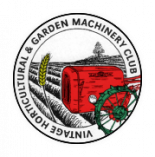
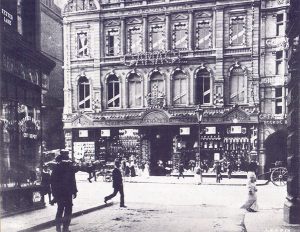
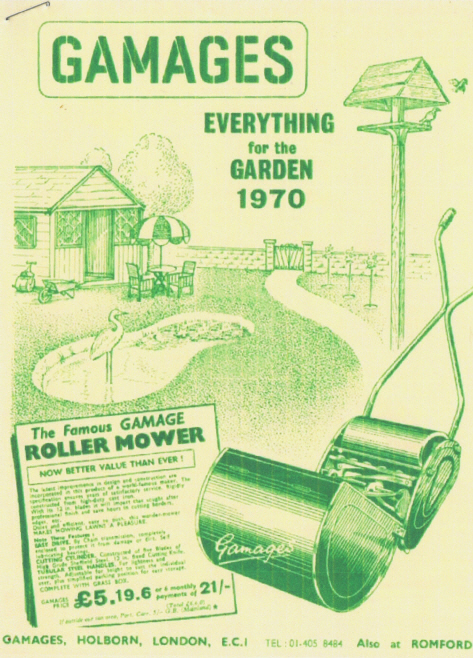
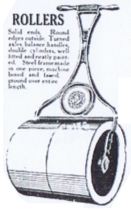
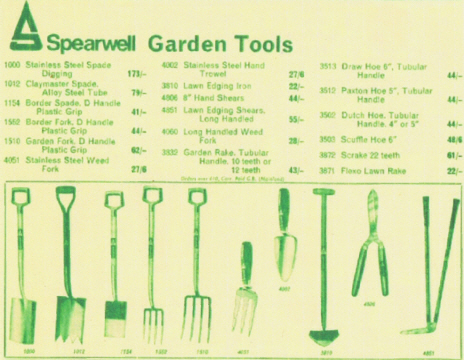
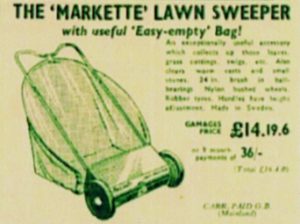
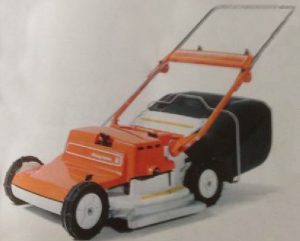
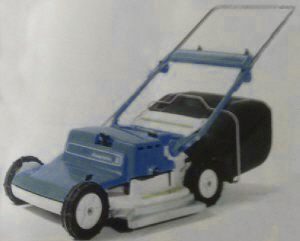
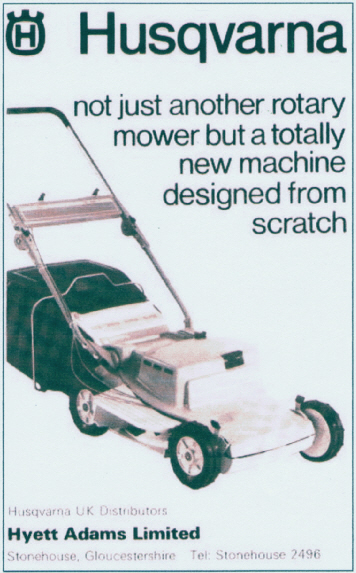 Then, a year after I started looking for this mower I find a magazine advert (image right) with dealers name and address of Hyett Adams in Gloucestershire, which confirms they were sold in the UK and it wasn’t just some magazine hear-say to fill their editorial pages.
Then, a year after I started looking for this mower I find a magazine advert (image right) with dealers name and address of Hyett Adams in Gloucestershire, which confirms they were sold in the UK and it wasn’t just some magazine hear-say to fill their editorial pages.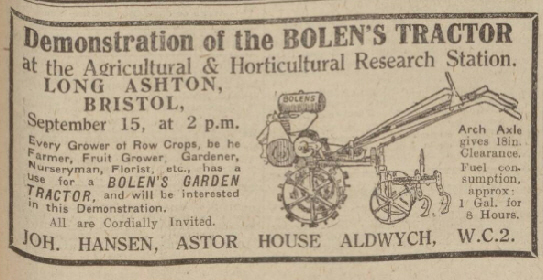
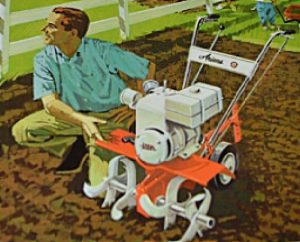
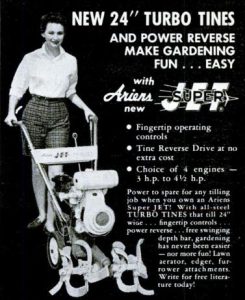
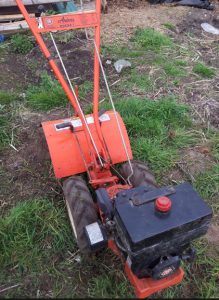
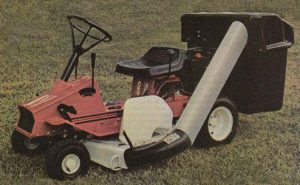
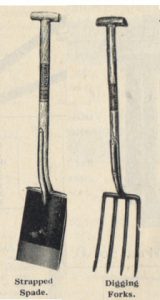
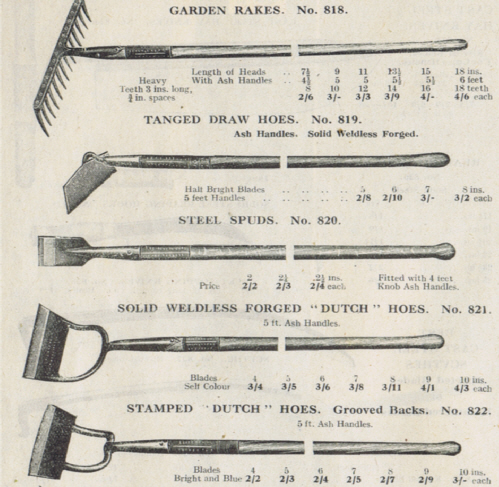
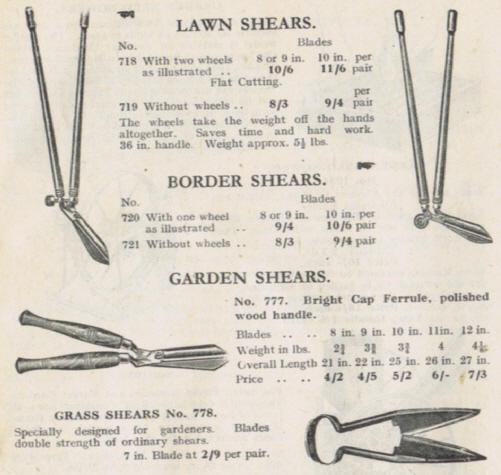
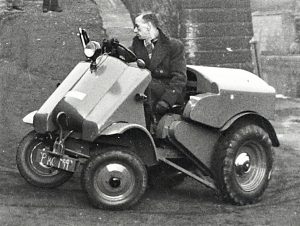
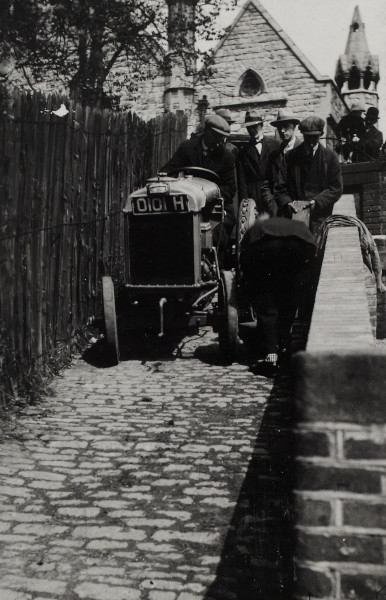
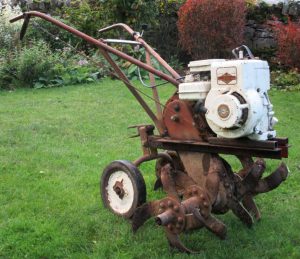
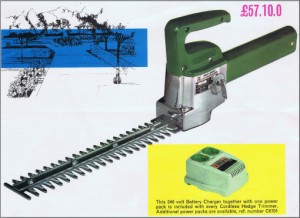
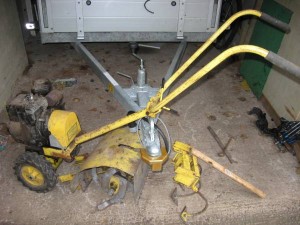
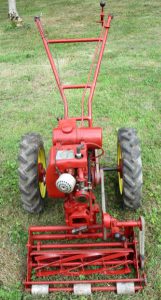
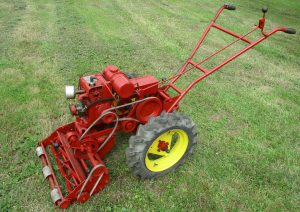
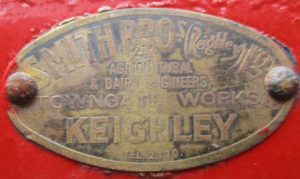 Unusually this article is briefly about a specific machine. And just as this Barford has a history so does every machine and they are always worth researching. If you have a manufacturer name, address or makers plate then five places to start are:
Unusually this article is briefly about a specific machine. And just as this Barford has a history so does every machine and they are always worth researching. If you have a manufacturer name, address or makers plate then five places to start are: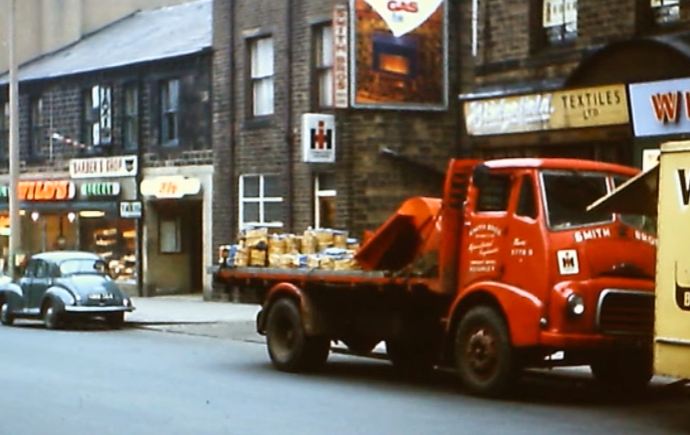

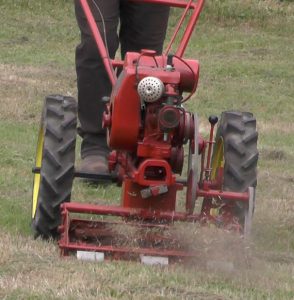
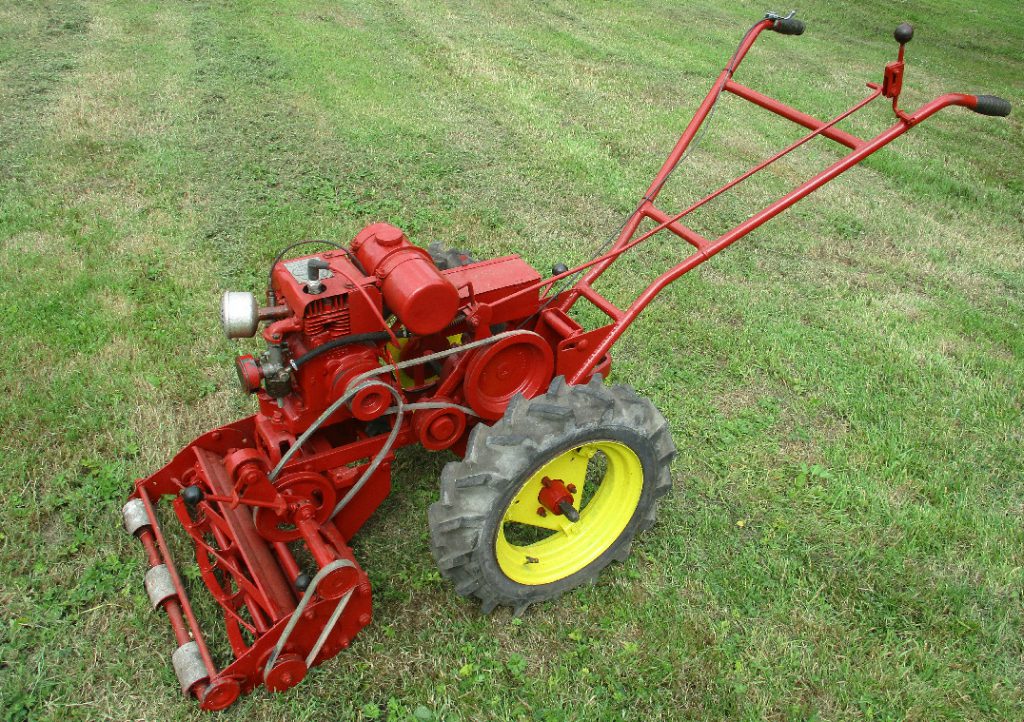
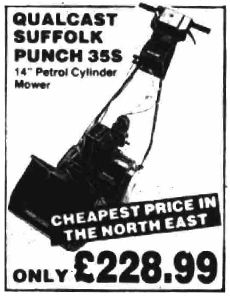
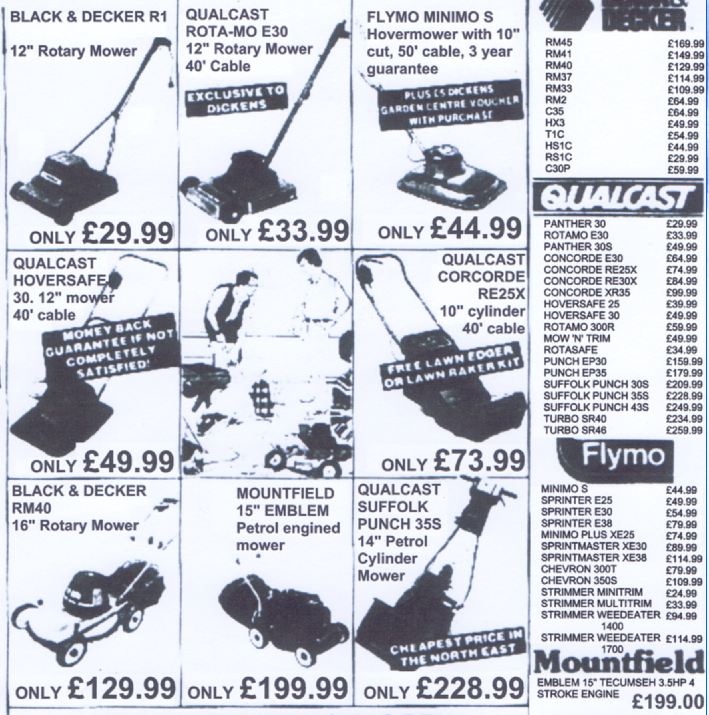
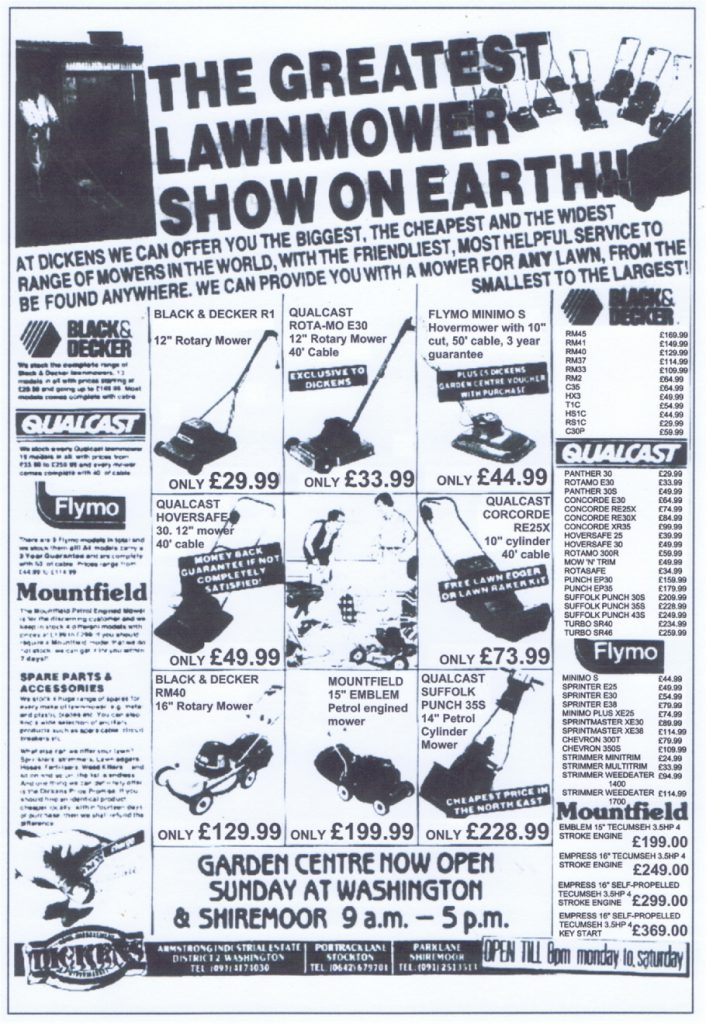 Briefly, there is a huge range of electric mowers. What’s the difference between the Qualcast Concorde RE25X and the RE30X apart from £10.00 ? Or the Flymo Sprinter E25 and E30 ? A brochure would be mighty helpful!
Briefly, there is a huge range of electric mowers. What’s the difference between the Qualcast Concorde RE25X and the RE30X apart from £10.00 ? Or the Flymo Sprinter E25 and E30 ? A brochure would be mighty helpful!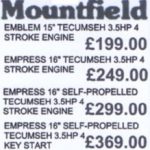 There isn’t a Mountfield electric mower in the bottom right corner of Dickens advert, they may not have been manufacturing them at the time, but their petrol mowers show that the price nearly doubles between the Mountfield Emblem 15″ and the 16″ self propelled with electric start, both with a 3.5hp Tecumseh engine – would that be a premium product at the time?
There isn’t a Mountfield electric mower in the bottom right corner of Dickens advert, they may not have been manufacturing them at the time, but their petrol mowers show that the price nearly doubles between the Mountfield Emblem 15″ and the 16″ self propelled with electric start, both with a 3.5hp Tecumseh engine – would that be a premium product at the time?